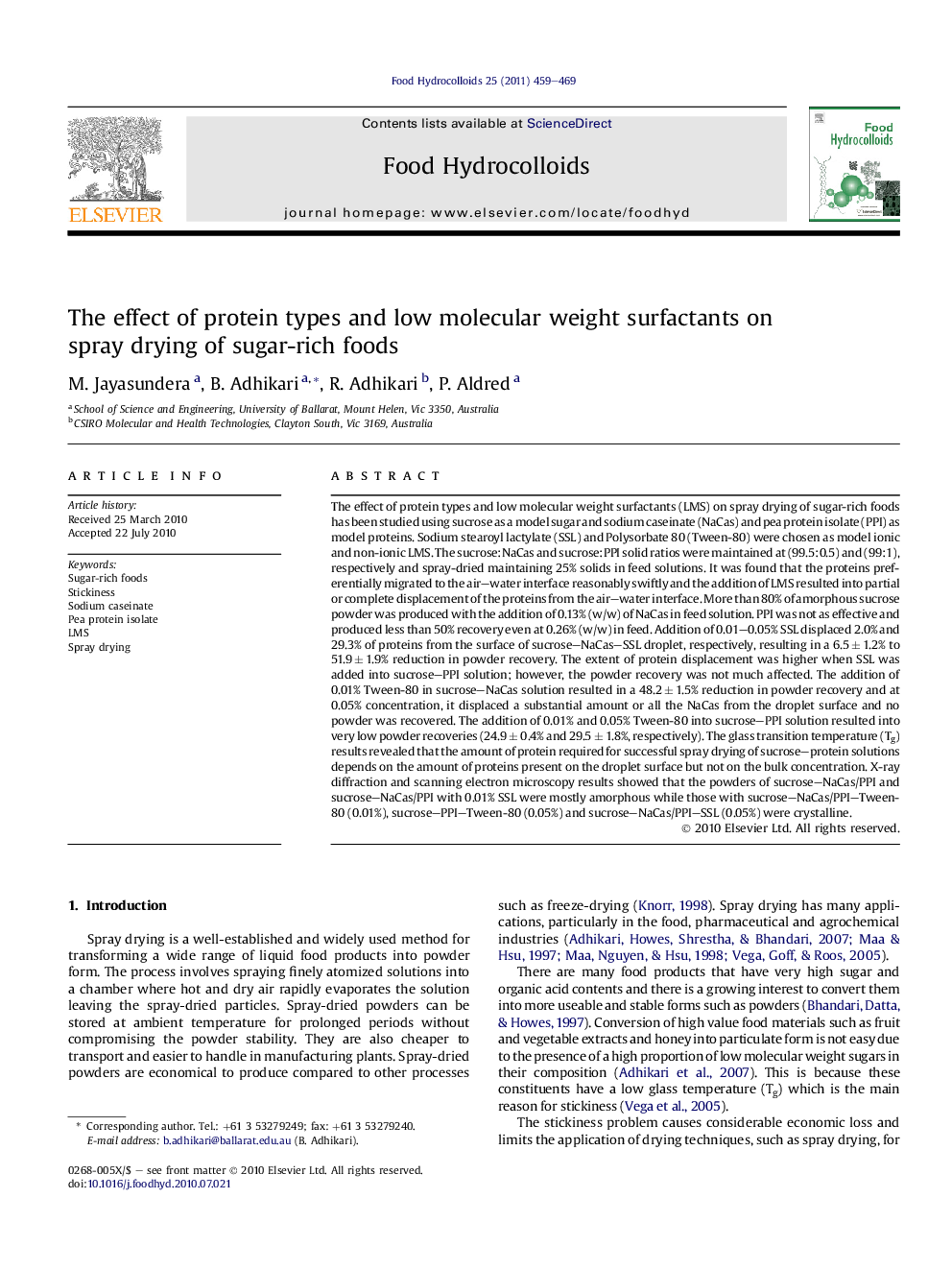| Article ID | Journal | Published Year | Pages | File Type |
|---|---|---|---|---|
| 604474 | Food Hydrocolloids | 2011 | 11 Pages |
The effect of protein types and low molecular weight surfactants (LMS) on spray drying of sugar-rich foods has been studied using sucrose as a model sugar and sodium caseinate (NaCas) and pea protein isolate (PPI) as model proteins. Sodium stearoyl lactylate (SSL) and Polysorbate 80 (Tween-80) were chosen as model ionic and non-ionic LMS. The sucrose:NaCas and sucrose:PPI solid ratios were maintained at (99.5:0.5) and (99:1), respectively and spray-dried maintaining 25% solids in feed solutions. It was found that the proteins preferentially migrated to the air–water interface reasonably swiftly and the addition of LMS resulted into partial or complete displacement of the proteins from the air–water interface. More than 80% of amorphous sucrose powder was produced with the addition of 0.13% (w/w) of NaCas in feed solution. PPI was not as effective and produced less than 50% recovery even at 0.26% (w/w) in feed. Addition of 0.01–0.05% SSL displaced 2.0% and 29.3% of proteins from the surface of sucrose–NaCas–SSL droplet, respectively, resulting in a 6.5 ± 1.2% to 51.9 ± 1.9% reduction in powder recovery. The extent of protein displacement was higher when SSL was added into sucrose–PPI solution; however, the powder recovery was not much affected. The addition of 0.01% Tween-80 in sucrose–NaCas solution resulted in a 48.2 ± 1.5% reduction in powder recovery and at 0.05% concentration, it displaced a substantial amount or all the NaCas from the droplet surface and no powder was recovered. The addition of 0.01% and 0.05% Tween-80 into sucrose–PPI solution resulted into very low powder recoveries (24.9 ± 0.4% and 29.5 ± 1.8%, respectively). The glass transition temperature (Tg) results revealed that the amount of protein required for successful spray drying of sucrose–protein solutions depends on the amount of proteins present on the droplet surface but not on the bulk concentration. X-ray diffraction and scanning electron microscopy results showed that the powders of sucrose–NaCas/PPI and sucrose–NaCas/PPI with 0.01% SSL were mostly amorphous while those with sucrose–NaCas/PPI–Tween-80 (0.01%), sucrose–PPI–Tween-80 (0.05%) and sucrose–NaCas/PPI–SSL (0.05%) were crystalline.
Graphical abstractFigure optionsDownload full-size imageDownload as PowerPoint slide
